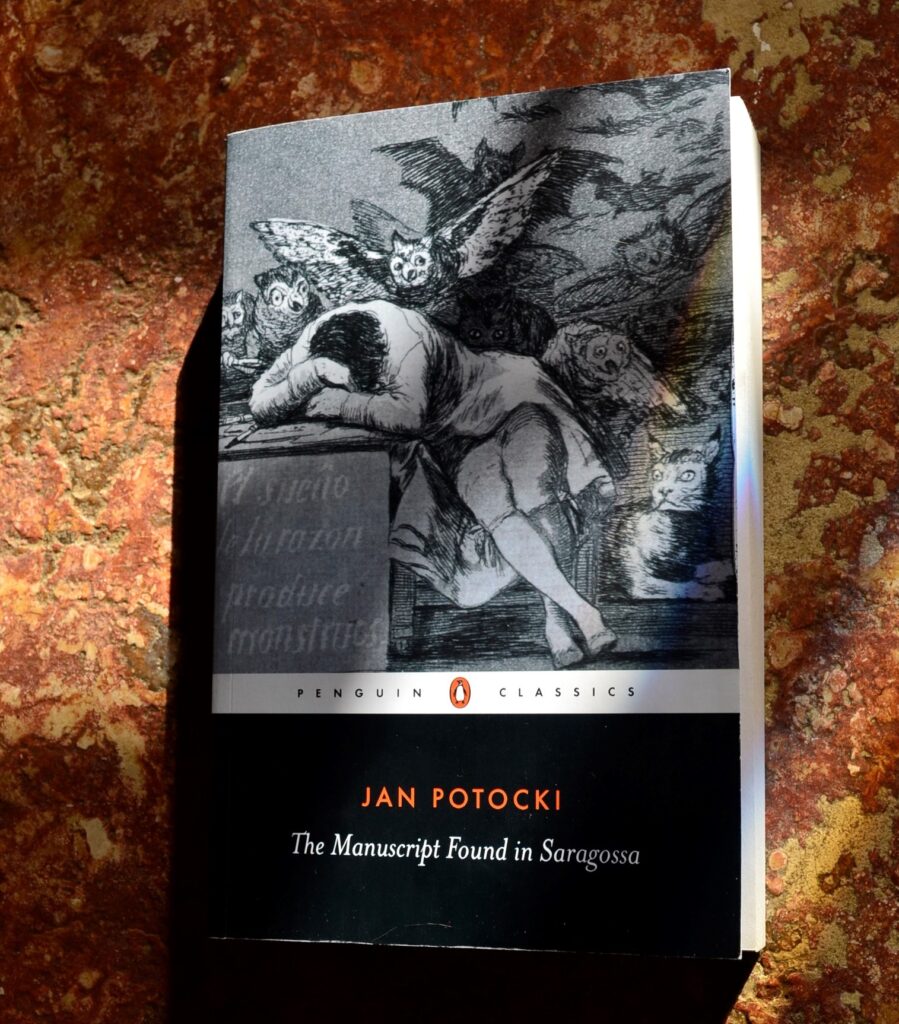

The overall structure proceeds from serious and almost surrealistic elements to romantic comedy, as if to suggest a philosophical hierarchy with absurd humor at the transcendent top. There are, by my count, five layers in all, each filled with an interlocking cast of characters (the Moorish sisters, for example, return in various guises) and exuberant visual details like a skull goblet. This may all be a dream–he keeps coming to in a sere hillside landscape next to a pair of hanged men, made spookier still by Krzysztof Penderecki’s all-percussion score.Īs he tries to make his way to Madrid, the grandfather hears stories from others, who hear stories from others.

He meets a pair of Moorish sisters who suggest that he marry them both but that to do so he has to convert to Islam.
THE SARAGOSSA MANUSCRIPT SERIES
The manuscript turns out to contain writings and drawings by the soldier’s grandfather, a Walloon captain in Spain, and the film shifts to the grandfather’s perspective as he enters upon a series of adventures. The tale begins with a soldier in Napoleon’s time who finds an old manuscript in a house where he hides out in the midst of a battle. It contains aspects of Tristram Shandy, early occultism, the Thousand and One Nights, Don Quixote, and the Decameron, all without being really like any of those. That’s a twist that would have delighted Potocki, whose story is a strange mix of nested tales–madcap, sexy, and horrifying all at the same time.
THE SARAGOSSA MANUSCRIPT ARCHIVE
The film’s admirers included Luis Bunuel, David Lynch, and Jerry Garcia, who co-financed the present restoration, only to die a day after a shipment to the Pacific Film Archive in Berkeley turned out to contain the wrong version of the film. Filmed as The Saragossa Manuscript in 1965 by director Wojciech Has, it attained cult status in the West despite releases that cut up to an hour from its 182-minute length. Well known to Poles, the novel was finally translated into English in 1995. Then, convinced he was turning into a werewolf, he committed suicide. He became depressed in later life and retreated to his estate, where he wrote a massive novel, The Manuscript Found in Saragossa. Count Jan Potocki (1761-1815) was a Polish nobleman who fought at sea as a member of the Knights of Malta, traveled to Mongolia and carefully recorded what he saw there, and was the first Pole to fly in a balloon–just for starters.


 0 kommentar(er)
0 kommentar(er)
